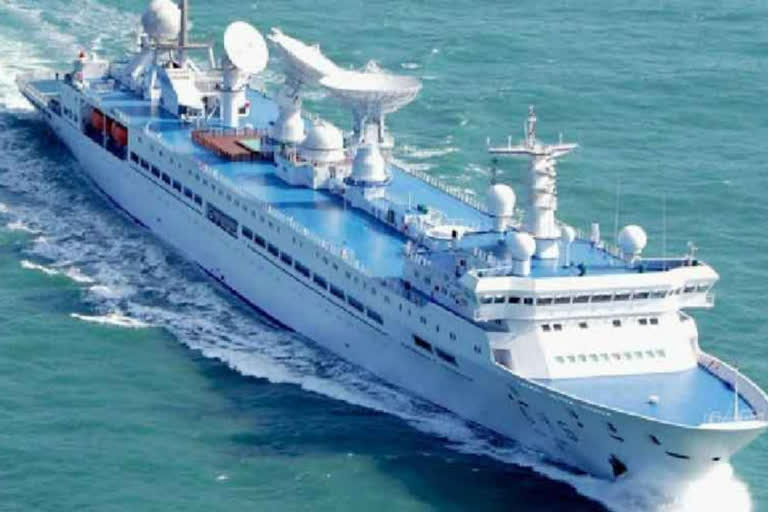New Delhi: Ignoring Indian protestations and brushing aside a rush of controversies on its berthing at the Sri Lankan port of Hambantota, early in the morning on Tuesday, the ‘Yuanwang-5’ dropped anchor, for a week-long stay from August 16 to 22.
Last month itself India had raised concerns over the ship’s docking at Hambantota which was followed up by a meeting in Cambodia between the Indian and Lankan foreign ministers—S Jaishankar and Ali Sabry—respectively. The Indian efforts could only stall the ‘Yuanwang 5’s by a few days. The ship’s considerably long presence so very close to India’s coastline is fraught with security implications.
Partly Chinese-owned, Hambantota is a deep sea port strategically located on the southern coast of the island nation from where the ship’s state-of-the-art equipment can have a broad sweep of India’s eastern coastline and territorial waters. While the stated motive is refueling, replenishment and other port services, the ‘Yuanwang-5’ has a stated minimum operational range of about 750 km, within which it can track missiles and rockets.
The ship’s location will position it in effective proximity to two of India’s nuclear power plants—at Kudankulam and Kalpakkam—both in Tamil Nadu. While the Kudankulam NPP is the largest nuclear power station in India, the Kalpakkam Atomic Power Station is India's first fully indigenously constructed nuclear power station.
Also under the ‘Yuanwang-5’s probing gaze will be India’s major rocket launch sites at the Vikram Sarabhai Space Centre in Thiruvananthapuram (Kerala), Satish Dhawan Space Centre (Sriharikota), Andhra Pradesh, and possibly the Dr Abdul Kalam Island, off the Odisha sea coast, where India’s Integrated Test Range (ITR) missile testing facility is operated by the Defence Research and Development Organization (DRDO).
Also read: China envoy plays down controversy over Chinese research ship docking in Sri Lanka
In keeping with its enhanced military muscle and growing assertiveness on the high seas, China has built a flotilla of ‘dual-use’ ships that specialize not only in research and exploration but also in snooping activities with security implications. The ‘Yuanwang’ series comprising four maritime ocean measurement vessels for space missions—the Yuanwang-3, Yuanwang-5, Yuanwang-6, and Yuanwang-7—are operated by the Strategic Support Force (SSF) of the PLA.
Established in 2015, the SSF’s brief to centralize the PLA’s strategic space, cyber, electronic, information, communications, and psychological warfare missions and capabilities. With tracking, telemetry, and command stations in Namibia, Pakistan, and Argentina, the SSF operates the ‘Yuanwang’ space support ships to track satellite and intercontinental ballistic missile (ICBM) launches.
Besides the ‘Yuanwang’ quartet, the PLA Navy (PLAN) also operates a fleet of six more sophisticated electronic reconnaissance vessels, viz the ‘Neptune’ (Haiwangxing), ‘Polaris’ (Beijixing), ‘Uranus’ (Tianwangxing), ‘Sirius’ (Tianlangxing), ‘Mizar’ (Kaiyangxing) and a sixth one which is known only by its hull code of 855.
All these six vessels are capable of conducting “continuous all-weather reconnaissance of various targets within a certain range” and the ability to collect information of air, water and underwater assets.
Numerically, PLAN is the largest navy in the world with a battle force of about 355 ships and submarines, including approximately more than 145 major surface combatants. The platforms are mostly modern multi-role platforms. PLAN aims to increase its strength to 420 ships by 2025 and 460 ships by 2030.



